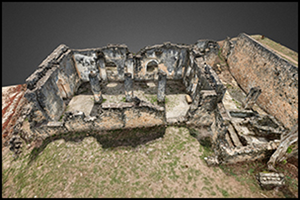Crossref Citations
This article has been cited by the following publications. This list is generated based on data provided by
Crossref.
Praet, Estelle
2023.
Plastic pollution: archaeological perspective on an Anthropocene climate emergency.
World Archaeology,
Vol. 55,
Issue. 3,
p.
329.
Frederick, Ursula K.
O’Connor, Sue
Milgin, Annie
Andrews, Will
Balme, Jane
Edwards, H. Jane
Edwards, Kyra
Gray, Hilda
and
Marshall, Melissa
2023.
Trees to remember: culturally modified boab trees in the face of climate change.
World Archaeology,
Vol. 55,
Issue. 3,
p.
315.
GroundCheck, Members of the Research Cluster
2023.
Global archaeology and climate change from the experience of research within a public body and a proposal to collaborate internationally on “super-sites”.
World Archaeology,
Vol. 55,
Issue. 3,
p.
259.
Jones, Benjamin D.
Collings, Ben
Dickson, Mark E.
Ford, Murray
Hikuroa, Daniel
Bickler, Simon H.
and
Ryan, Emma
2024.
Regional implementation of coastal erosion hazard zones for archaeological applications.
Journal of Cultural Heritage,
Vol. 67,
Issue. ,
p.
430.
Hill, Austin Chad
Rowan, Yorke M.
Al-Hajj, Ali Atallah
Feng, Jennifer
Harris, Joseph
Heidkamp, Blair
Kersel, Morag M.
Nishida, Megan
and
Schmücker, Amelie
2024.
Fieldwork in an Increasingly Variable Climate: The Kites in Context Project 2023 Field Season.
Journal of Field Archaeology,
Vol. 49,
Issue. 1,
p.
4.
Rockman, Marcy
2024.
Capacity of the U.S. federal system for cultural heritage to meet challenges of climate change.
Proceedings of the National Academy of Sciences,
Vol. 121,
Issue. 15,
Hollesen, Jørgen
Jepsen, Malte Skov
Stendel, Martin
and
Harmsen, Hans
2024.
Assessing the consequences of recent climate change on World Heritage sites in South Greenland.
Scientific Reports,
Vol. 14,
Issue. 1,
Moussavi.A, S.Mohammad Reza
and
Lak, Azadeh
2024.
Cultural landscapes in climate change: A framework for resilience in developing countries.
Journal of Environmental Management,
Vol. 362,
Issue. ,
p.
121310.
Laohaviraphap, Neeraparng
and
Waroonkun, Tanut
2024.
Integrating Artificial Intelligence and the Internet of Things in Cultural Heritage Preservation: A Systematic Review of Risk Management and Environmental Monitoring Strategies.
Buildings,
Vol. 14,
Issue. 12,
p.
3979.
Jørgensen, Erlend Kirkeng
Martens, Vibeke Vandrup
Solem, Dag-Øyvind Engtrø
and
Nau, Erich
2025.
A Novel Protocol for Reconstructing Depositional Histories of Anthropogenic, Sedimentary Records: the Case of the Holocene-Deep Kirkhellaren Cave Deposits in Coastal Arctic Norway.
Journal of Field Archaeology,
Vol. 50,
Issue. 1,
p.
60.
Jerand, Philip
Buckland, Philip I.
and
Linderholm, Johan
2025.
Human traces in Arctic soils: Geoarchaeological evidence from 19th-century herders and farmers.
Polar Record,
Vol. 61,
Issue. ,
You, Weiwen
Xu, Haiyun
Ren, Mujie
Duan, Jiaxuan
Zhang, Rouran
and
Kizos, Thanasis
2025.
Mapping multiple stakeholder-perceived cultural ecosystem services in coastal landscapes along the Maritime Silk Road.
Landscape Research,
p.
1.
Cassar, JoAnn
2025.
Approaches to the conservation of archaeological sites in the Mediterranean in the current and changing climates, with a focus on the Prehistoric Temples of Malta.
Rendiconti Lincei. Scienze Fisiche e Naturali,
Vol. 36,
Issue. 1,
p.
65.
